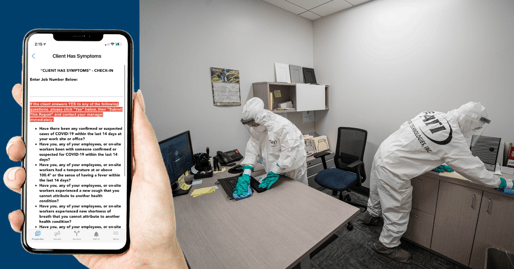Case Study: How a ‘life-saving’ App Highlights Three Critical Event Best Practices

We are delighted when clients of In Case of Crisis share the use cases of how they are using our platform and what problems it is solving.
We always learn something from these stories. More importantly, we are told by other professionals how the case studies provide inspiration to strengthen crisis and emergency preparedness at their own organizations.
Recently, we had a client share with us how it is using In Case of Crisis to respond to the work health challenges posed by COVID-19. During the conversation, the firm’s lead executive observed, “This is a life-saving issue”.
Anything that saves lives during a pandemic felt like something we should share with others as widely as possible.
The firm is the California-headquartered and family-owned ATI, which itself specializes in post-disaster recovery services such as restoration, environmental and reconstruction services as well as preparedness assessment and training.
As you would expect given its business, ATI knows how to navigate a critical event and leverage technology to protect people.
ATI’s lessons and insights are of particular value to any organizations which have employees in distributed locations, including retail, insurance, hotels, restaurant chains, financial services and travel-related businesses, or with service-related operations where being onsite with clients put employees on the front lines like service and repair businesses.
Here is how the ATI case study illustrates three golden rules for successfully deploying a technology solution enabled by employees who are asked to respond to a high-stress, critical event:
RULE #1: The solution should be easy to use.
ATI’s EVP of Revenue and Innovation, Jeff Magoon, says: “With my 24 years in disaster recovery, I know that when implementing technology, if the tool is not easy to use, it is really hard to introduce.”
At the outset of the COVID threat early in 2020, ATI looked for an emergency management platform. Jeff Magoon says that In Case of Crisis was the easy choice because of its ability to bring all the information to one application and to push information in real time to the entire organization regardless of where individual employees are located.
RULE #2: The solution must have tangible value to the employees themselves.
We all know how tools imposed by management can be sidelined and ignored by staff who see no value, only bureaucracy.
In the example of the ATI application, the benefits of In Case of Crisis were clear – it was used for an employee health check-in, collecting answers to critical health questions to keep staff safe and even, as ATI’s Jeff Magoon observed, saving their lives.
A playbook published on the ATI version of In Case of Crisis enabled field technicians to conduct their own daily check in, reporting whether they were COVID symptom free. If they showed symptoms, the playbook guided their next steps.
A second playbook enabled check-ins with clients, enabling the ATI field technicians to check and document the status of anyone they would be working with on a given day.
RULE #3: The solution must enable a quicker response to a threat than alternatives.
If a new tool just adds layers of forms to complete and more process, then it is going to be ignored when the moment of threat looms.
A speedy and effective response is the key to emergency and crisis management.
It is even better if the platform also drives action, overcoming the natural indecision of people in a panic.
ATI’s Jeff Magoon describes what they discovered about In Case of Crisis: “It is a one tap solution. It enables us to react quickly. It doesn’t matter what industry you’re in, an insurance firm, studio, In Case of Crisis empowers you to handle any threat to continuity of operations.”
And he added that In Case of Crisis “empowers your employees to be their very best…it allows them to take a breath and not panic. They know the platform is going to provide the critical next steps they need.”
If your organization is in retail, insurance, hotels, restaurant chains, financial services, travel or any business which needs best-in-class crisis and emergency preparedness you can:
- Read more about the ATI case study here
- Arrange to have your own demo of the benefits of the In Case of Crisis platform here.
Learn how hundreds of organizations large and small are using our award-winning issue and crisis management platform, In Case of Crisis, to better prepare for and respond faster to emerging threats.









